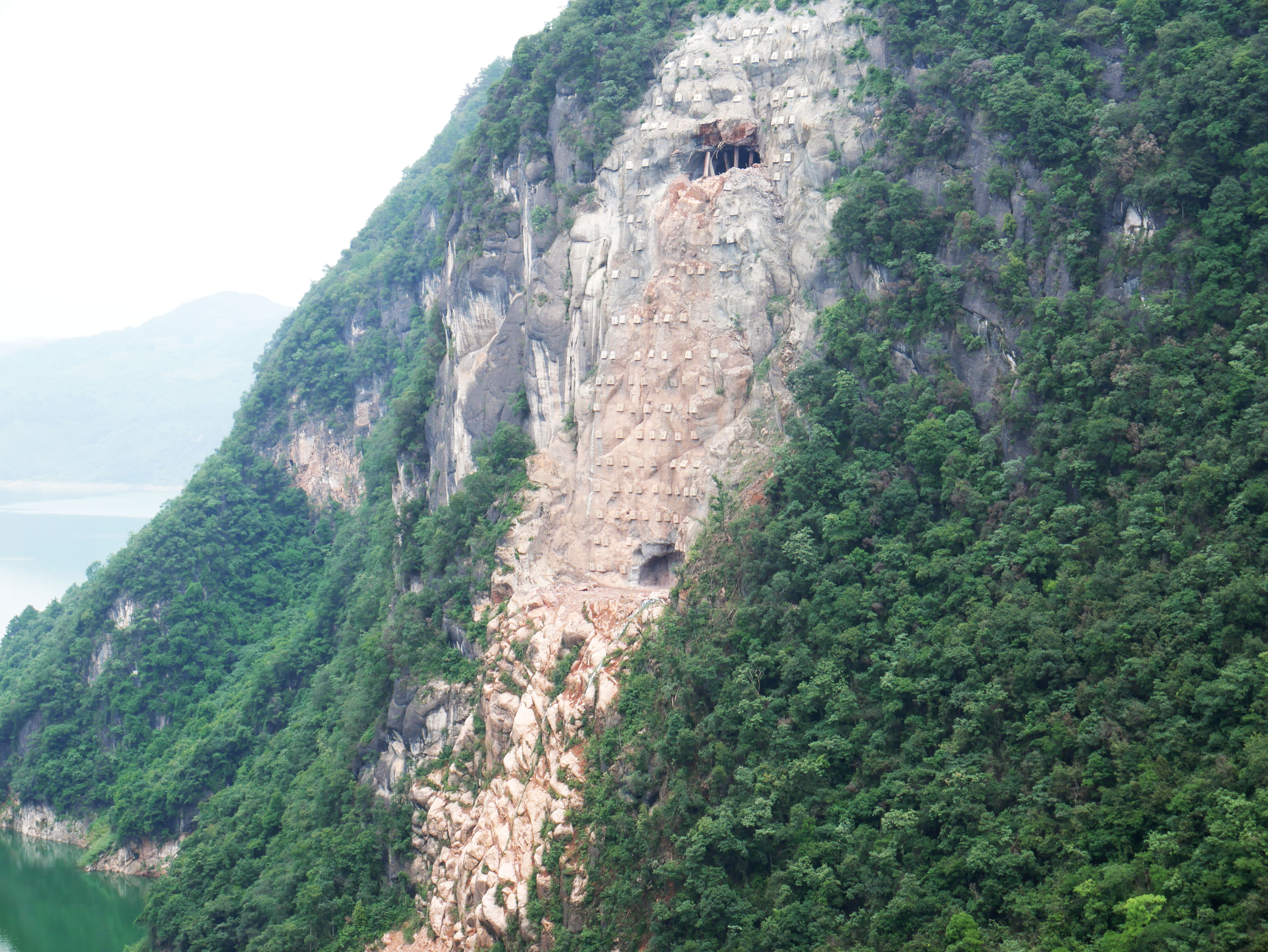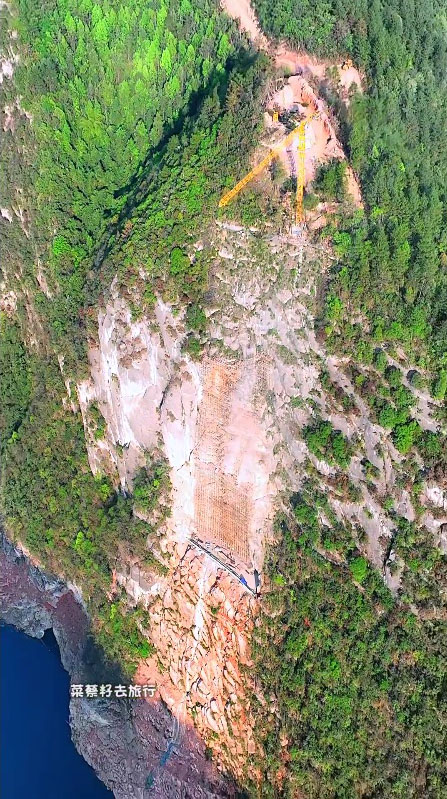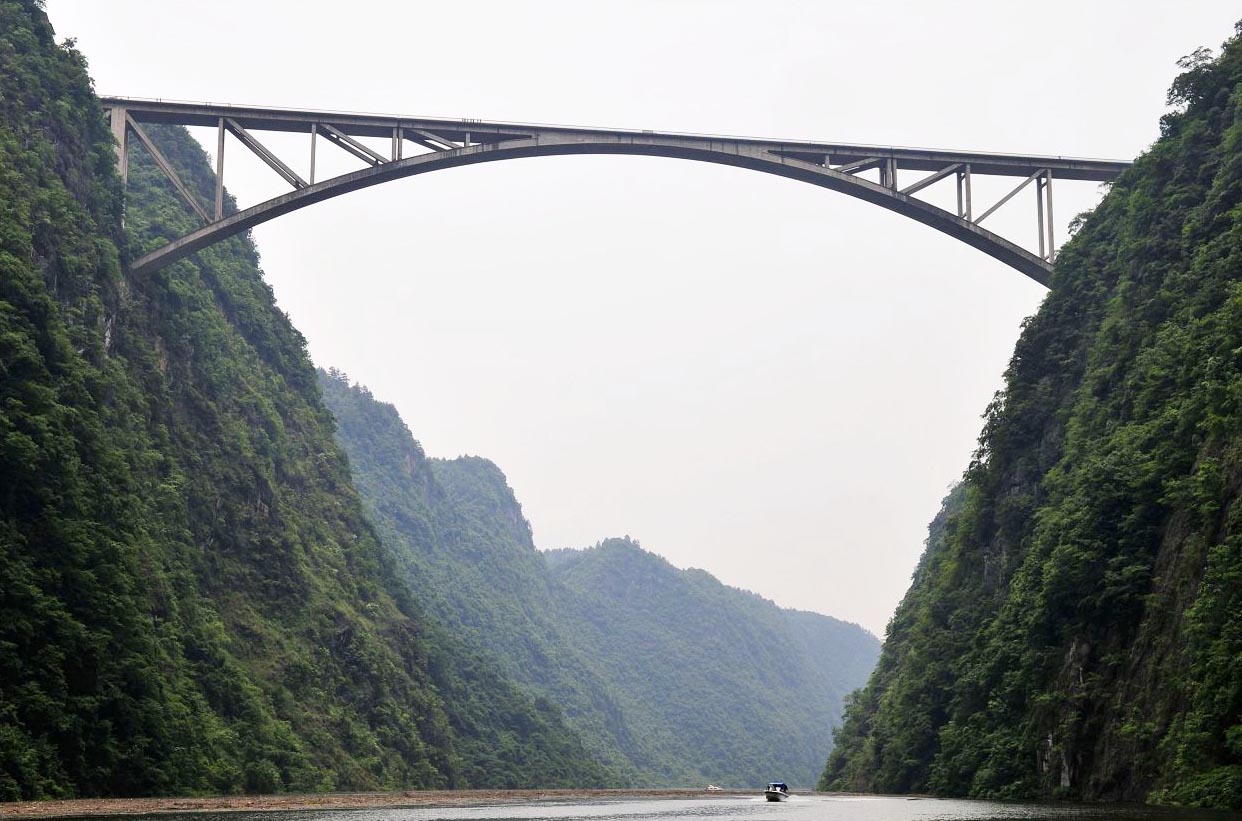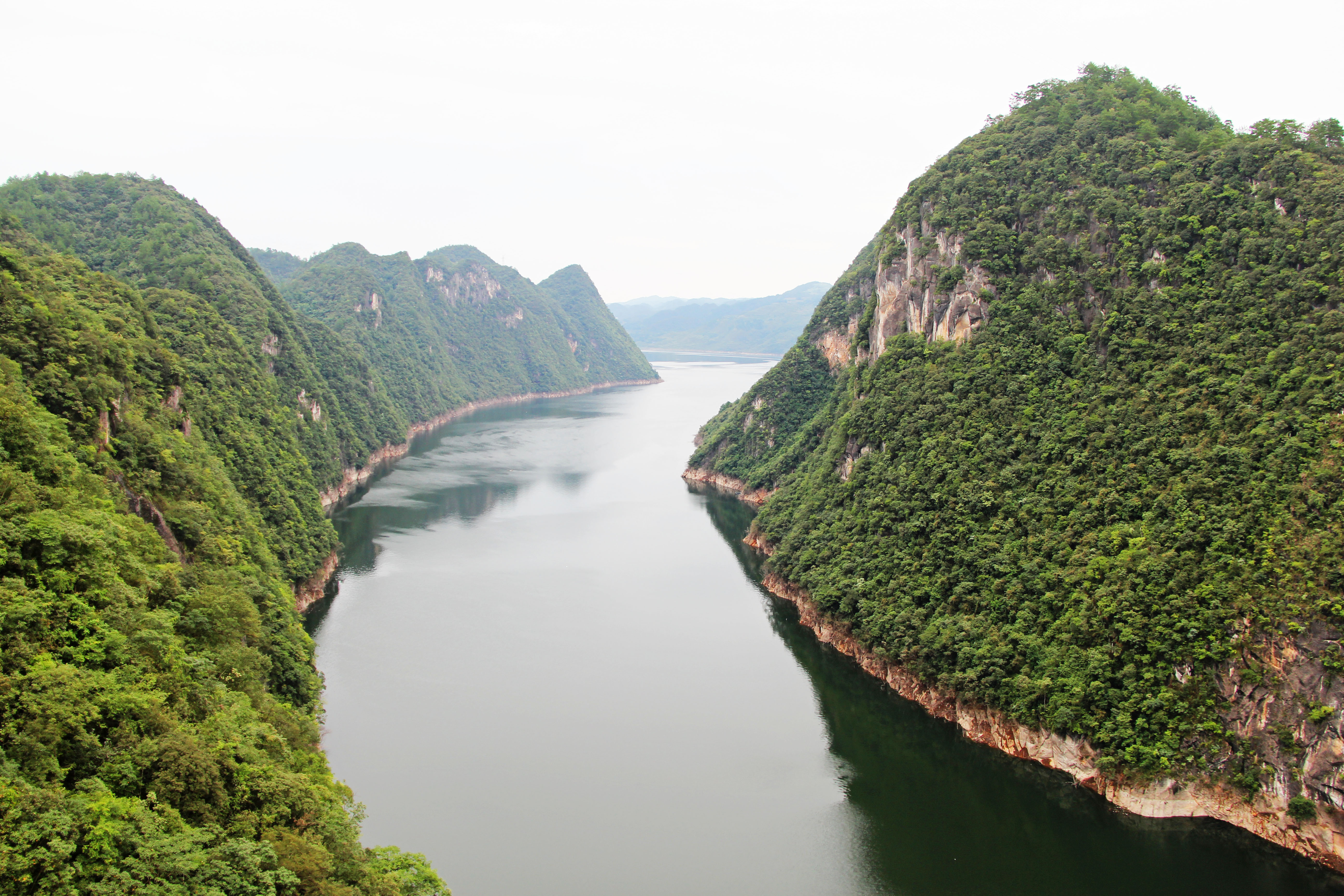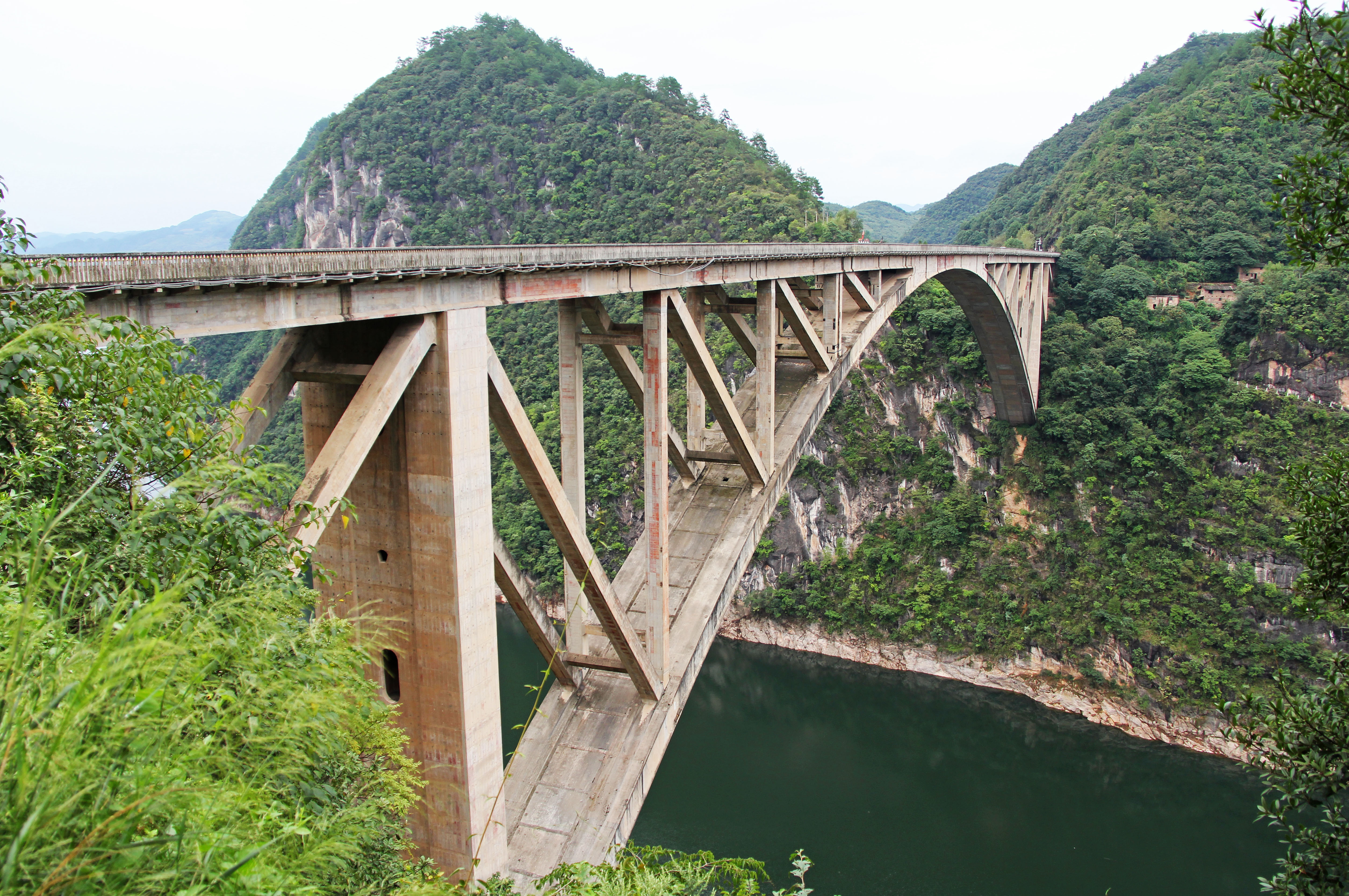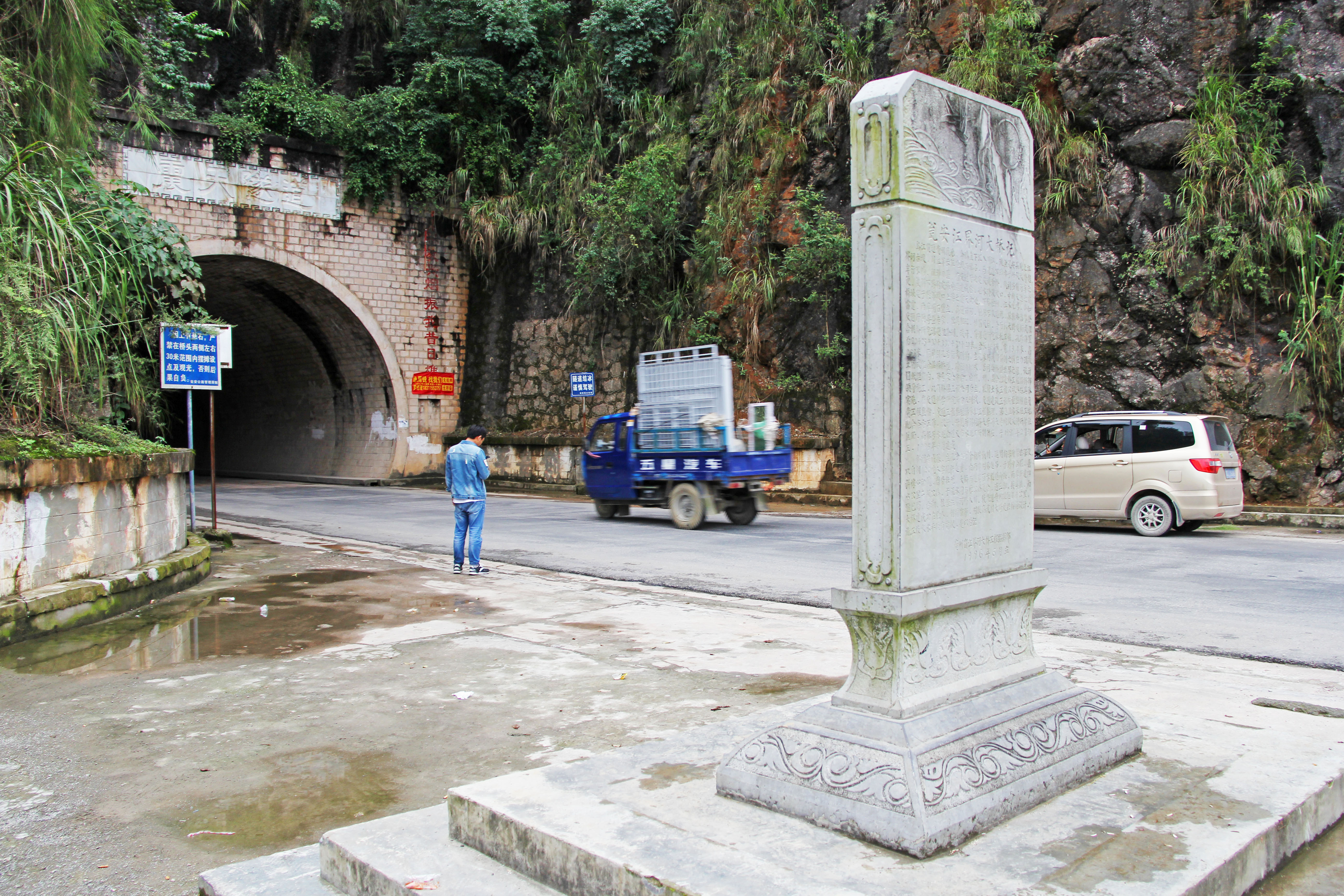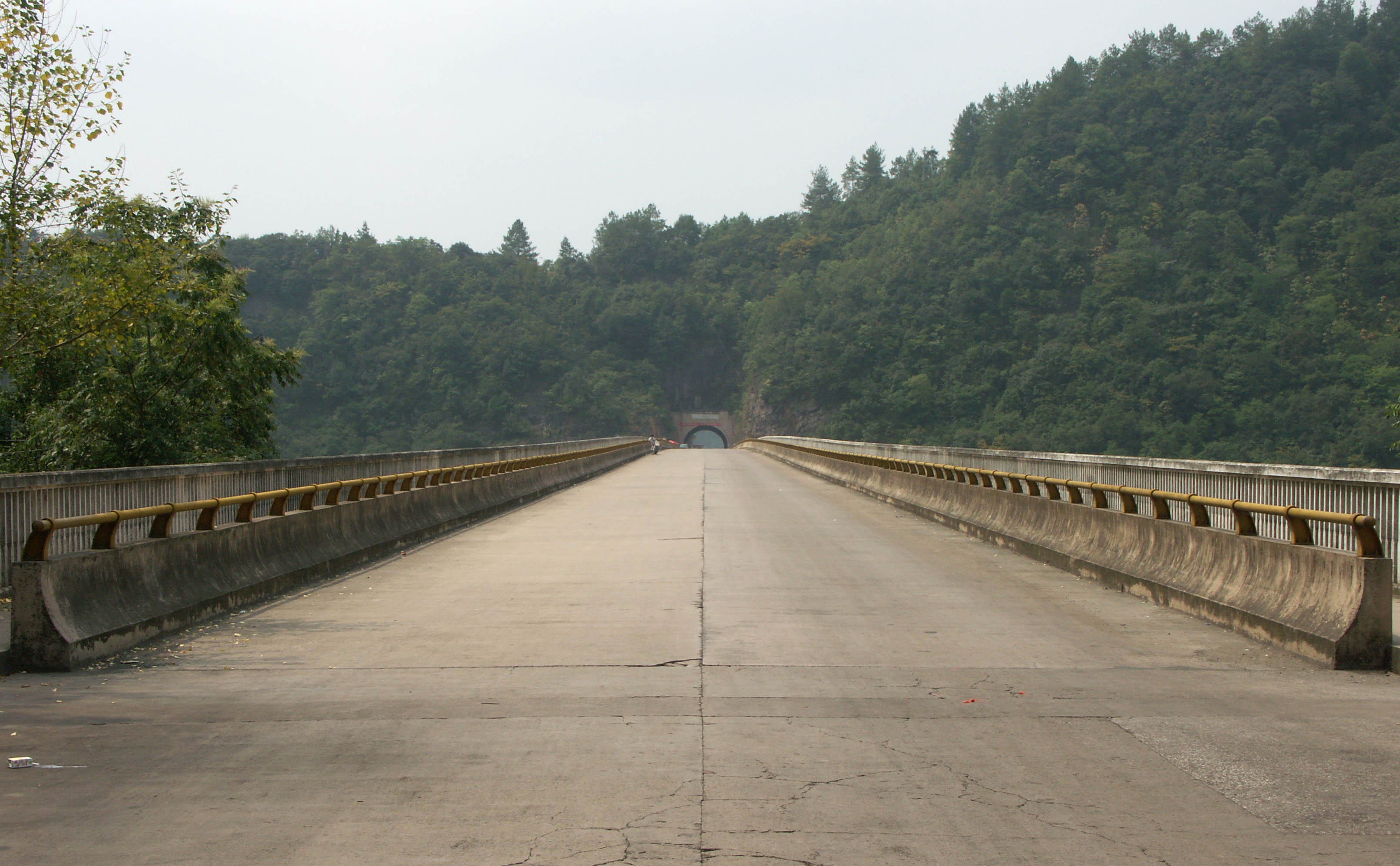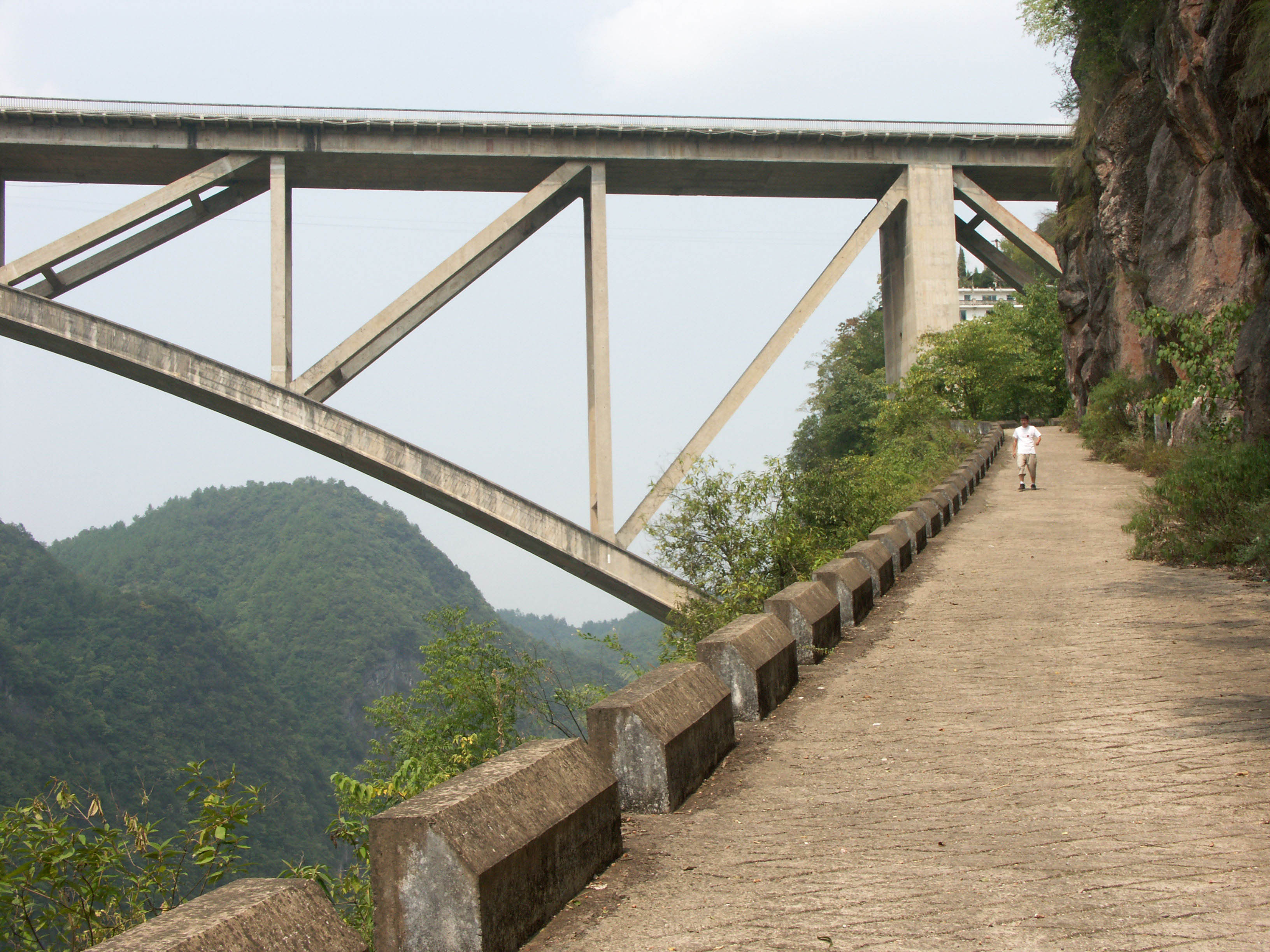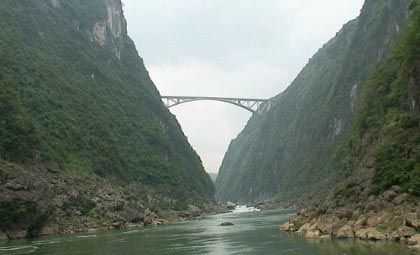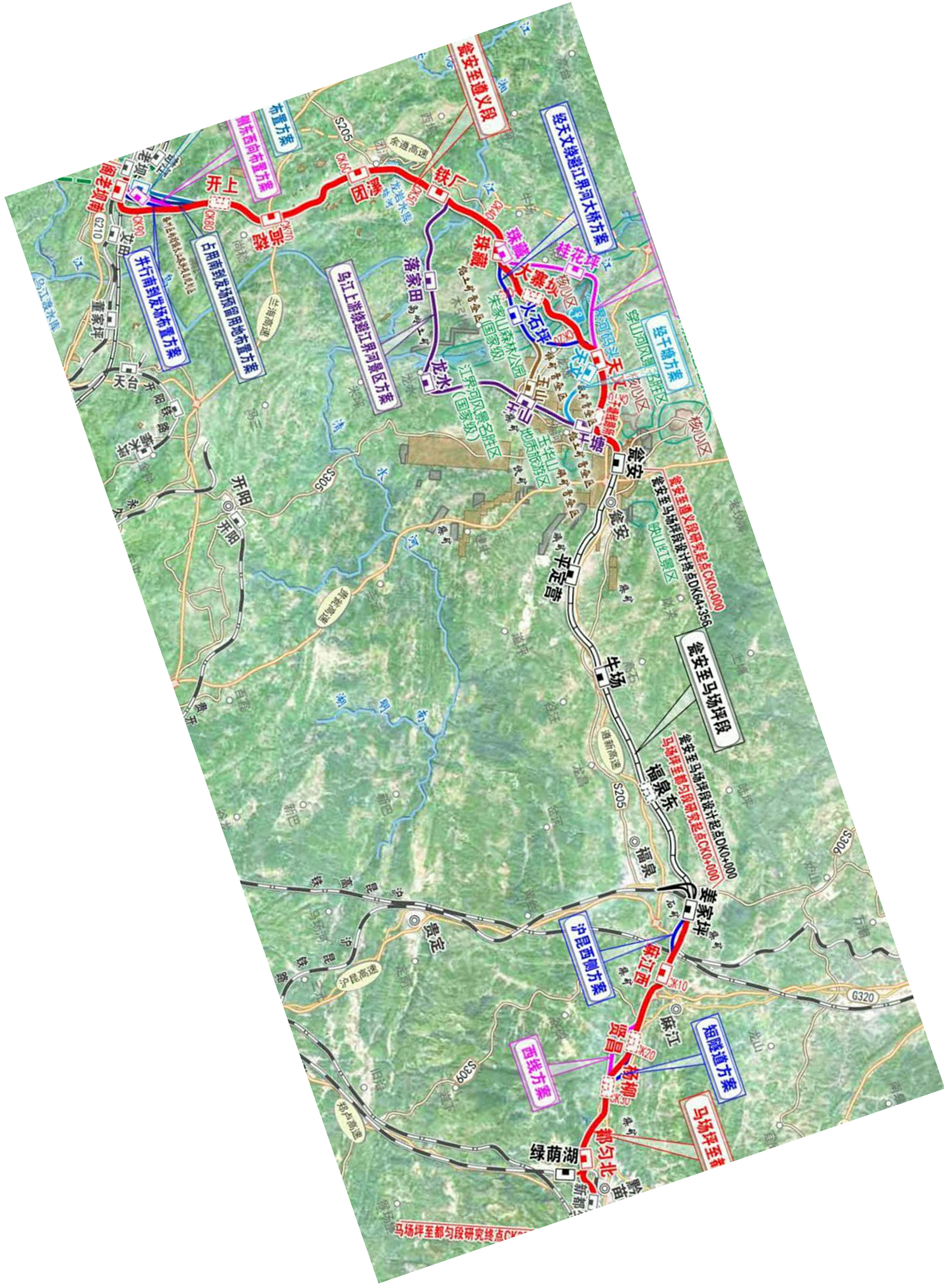Jiangjiehe Railway Bridge
Jiangjiehe Railway Bridge
江界河特大桥
Weng'an, Guizhou, China
978 feet high / 298 meters high
1,106 foot span / 337 meter span
2026
One of the highest concrete railway spans on earth, the Jiangjiehe Railway Bridge is part of a local freight route between Zunyi and Weng'an. The 337 meter concrete arch is located just a few hundred meters downstream of the 330 meter span Jiangjiehe road bridge that opened in 1995 as the highest bridge in China. The main arch rib of the railway span rises 61.5 meters for a 5.5:1 span to rise ratio.
The arch rib is composed of concrete-filled steel tubular skeletons encased in concrete. The composite girder consists of two I cross-sections of steel and concrete slabs connected by bolting and welding.
Both arch bridges cross over the deep waters of the 232.5 meter high Goupitan Dam reservoir that filled in 2009 and reduces the deck height of the railway bridge to approximately 160 meters above the full reservoir level. The road bridge is approximately 120 meters above the full reservoir level.
This Wengma railway was constructed primarily to transport phosphate reserves that are prominent in Weng'an County and make Guizhou a big exporter of fertilizer. The Wujiang River is one of the largest tributaries of the Yangtze River and has more high level bridges across its waters than any other waterway on earth. Only the Beipanjiang River has a more spectacular group of high river crossings in China even if the total bridge count is less.
Equally spectacular is the Xiangjiang Railway Bridge located 20 kilometers to the north on the same railway line. This double span extradosed bridge currently has the tallest railway bridge pier in the world at 161.5 meters.
An early Jiangjiehe Railway Bridge proposal with two ribs supporting A-frame spandrel supports.
Another Jiangjiehe Railway Bridge arch proposal with pointed arch-shaped spandrel supports.
The original 1995 Jiangjiehe road bridge before the reservoir filled up beneath the span in 2009.
Image by Eric Sakowski / HighestBridges.com
Image by Eric Sakowski / HighestBridges.com
Image by Eric Sakowski / HighestBridges.com
Image by Eric Sakowski / HighestBridges.com
Image by Eric Sakowski / HighestBridges.com
Image by Eric Sakowski / HighestBridges.com
Image by Eric Sakowski / HighestBridges.com
Railway cliff tunnel preparation visible behind the road arch bridge.
Image by Eric Sakowski / HighestBridges.com
Image by Eric Sakowski / HighestBridges.com
Image by Eric Sakowski / HighestBridges.com
Image by Eric Sakowski / HighestBridges.com
Image by Eric Sakowski / HighestBridges.com
Image by Eric Sakowski / HighestBridges.com
Image by Eric Sakowski / HighestBridges.com
Image by Eric Sakowski / HighestBridges.com
Image by Eric Sakowski / HighestBridges.com
Image by Eric Sakowski / HighestBridges.com
Image by Eric Sakowski / HighestBridges.com
Image by Eric Sakowski / HighestBridges.com
Image by Eric Sakowski / HighestBridges.com
Image by Eric Sakowski / HighestBridges.com
Image by Eric Sakowski / HighestBridges.com
Image by Eric Sakowski / HighestBridges.com
Image by Eric Sakowski / HighestBridges.com
Image by Eric Sakowski / HighestBridges.com
Image by Eric Sakowski / HighestBridges.com
Image by Eric Sakowski / HighestBridges.com
Image by Eric Sakowski / HighestBridges.com
Image by Eric Sakowski / HighestBridges.com
Jiangjiehe Bridge plaque. Image by Eric Sakowski / HighestBridges.com
Jiangjiehe bridge measurements. Image by Eric Sakowski / HighestBridges.com
Image by Eric Sakowski / HighestBridges.com
The mighty Wu River heads north to the Yangtze River. Image by Eric Sakowski / HighestBridges.com
Image by Eric Sakowski / HighestBridges.com
Image by Eric Sakowski / HighestBridges.com
Image by Eric Sakowski / HighestBridges.com
Image by Eric Sakowski / HighestBridges.com
Image by Eric Sakowski / HighestBridges.com
Image by Eric Sakowski / HighestBridges.com
Image by Eric Sakowski / HighestBridges.com
Image by Eric Sakowski / HighestBridges.com
The current arch bridge was built with the assistance of a temporary one lane suspension bridge with a main span of approximately 185 meters. Image by Tongji University.
The southern suspension bridge approach. Image by Eric Sakowski / HighestBridges.com
Image by Eric Sakowski / HighestBridges.com
The northern suspension bridge approach. Image by Eric Sakowski / HighestBridges.com
The suspension span measured approximately 975 feet (297 mtrs) between the back walls of the deck abutments or 1,060 feet (323 mtrs) between the since removed center supports of the cable span. Image by Eric Sakowski / HighestBridges.com
A view of the arch sometime around 2009 when a lake began to form beneath the bridge from the nearly completed Goupitan Dam. The water has not yet reached full height in this view.
Jiangjiehe Bridge satellite image.
Jiangjiehe Bridge satellite image before the reservoir formed behind the Goupitan Dam.
Jiangjiehe Bridge location map.
Wengma Railway route.


















